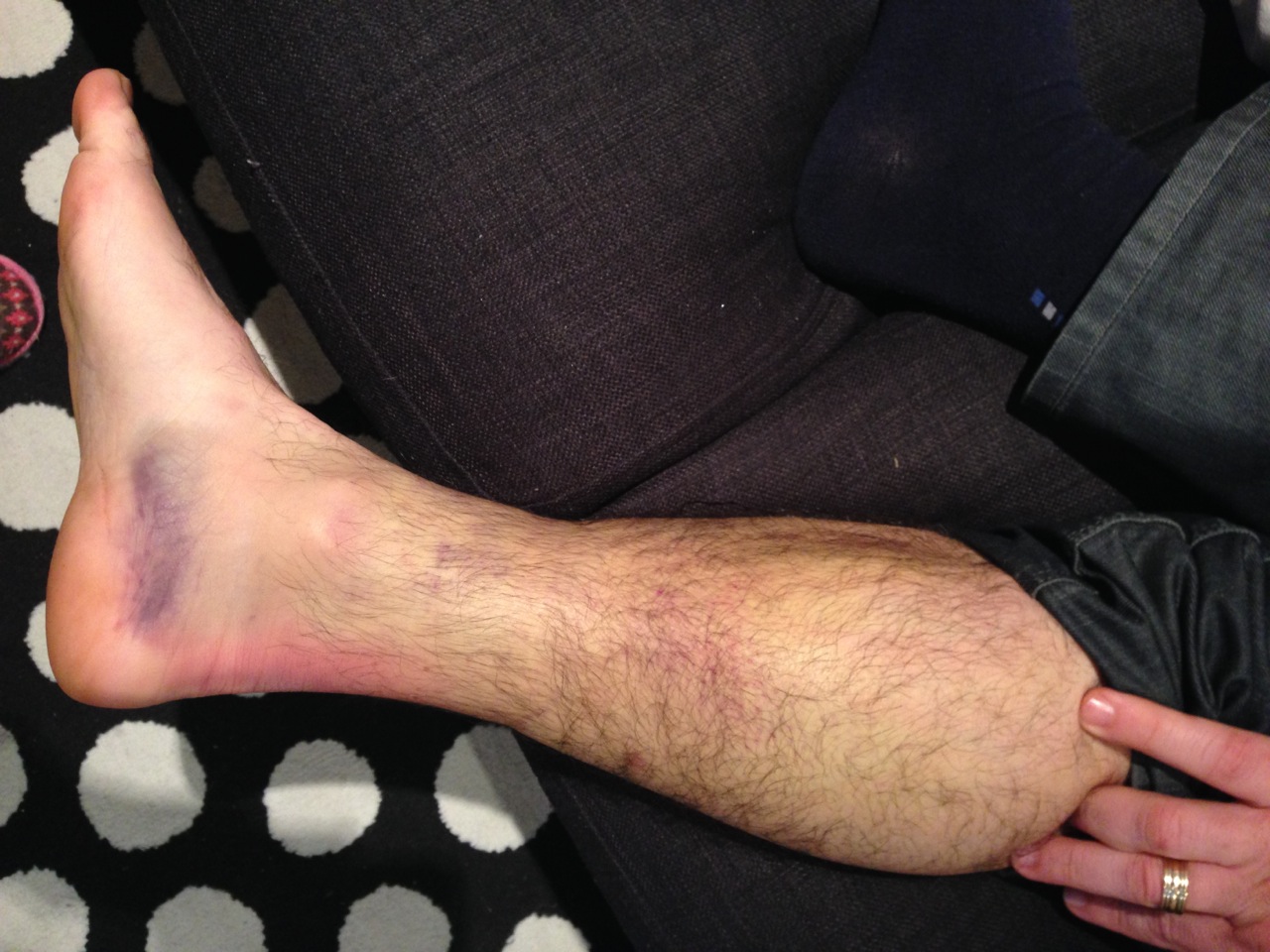Your Injury
- Abdominal Injuries
- Achilles Tendon Injuries
- Ankle Injuries
- Back Pain Lumbar Spine (Low)
- Back Pain Thoracic Spine (Middle)
- Buttock Pain
- Calf Pain
- Elbow Pain
- Foot Pain
- Groin Injuries
- Hamstring Injury
- Hand and Finger Injuries
- Headache
- Hip Pain
- Knee Injuries and Knee Pain
- Neck Pain
- Numbness, Tingling and Nerve Pain
- Thigh (Quadricep) Injuries
- Sciatica
- Shoulder
- Shoulder Blade (Scapula) Pain
- Toe Pain
- Wrist Injuries
Calf Pain
Calf pain is a common presenting complaint due to muscle tears or tightness and cramping. If not managed correctly it can persist and become a recurring problem. Common causes of calf pain are:
- Muscle Strains
- Cramps
- DVT
- Referred Pain
Muscle (Gastrocnemius) Strain
What is a gastrocnemius tear?
The gastrocnemius muscle is the outer, fleshy muscle in the calf. It has a medial(inner) and lateral(outer) head. A strain of this muscle refers to a tear. Muscle tears are graded in severity. These levels of trauma are:
- Grade 1 – small number of fibres with local pain and no strength loss.
- Grade 2 – significant fibre involvement with pain and swelling. Strength is decreased and movement is limited by pain.
- Grade 3 – a complete tear of the muscle.
What Causes a gastrocnemius tear?
Pain in this area can come from a memorable traumatic event such as a pushing off or running action. An explosive acceleration such as stretching to play a ball at squash or tennis may cause injury. The calf region is also a common site of contusion (local damage to the muscle which results in bleeding) caused through a direct blow to the muscle. Calf pain can also be referred pain from neural structures or from the lumbar spine. Biomechanical factors may be the underlying cause of calf pain. Excessive flat footedness (over pronation) can overload the calf muscles causing muscle tightness and soreness, leading to fatigue and eventual strain.
How does a gastrocnemius tear feel?
Calf muscle tears usually feel like a sharp pain immediately at the time of injury. Depending on the severity you maybe able to continue on with your activity, or it maybe too severe. Some people experience episodes of cramping pain in the calf that may be due to recurrent minor calf muscle strains, which are as a result of poorly rehabilitated scar tissue. Often a ‘tearing sensation’ occurs. As the muscle cools down following activity, pain may gradually increase as bleeding and swelling around the injured muscle continues. Gradual tightening and stiffening of the calf muscle occurs in more severe strains.
Management of a gastrocnemius tear & how to fix It
You should stop your activity immediately and start initial treatment. Treatment should preferably occur in the first 24-48 hours to control the amount of swelling and limit the degree of damage to the muscle. The RICE protocol should be commenced (Rest, Ice, Compression and Elevation) to reduce blood flow to the injured area, thereby, reducing the extent of swelling and tissue damage.You should continue the RICE regime until you consult a sports medicine professional, preferable within 2 days of the initial injury. The assistance of a sports medicine professional is important in the treatment of a calf muscle strain. Initially they can assist in determining the reason for and the extent of the injury and how long it is expected to recover. Management will involve appropriate techniques to assist in reducing pain and swelling and enhance the healing of the injured structures, including a progression of exercises aimed at increasing your range of motion, strength and function. As these exercises are functionally specific to your return activity, they will help prevent reinjury.
Cramps
The calf is the most common site of muscle cramps in the body. These can be treated with regular muscle stretching, correction of muscle balance and posture, and adequate conditioning for the activity. Other strategies implemented include incorporating plyometrics and eccentric muscle strengthening into training programmes and maintaining adequate carbohydrate and fluid reserves during competition.
DVT
Conditions often missed include deep venous thrombosis (DVT) which occurs occasionally in calf injuries. Signs and symptoms include constant calf pain, tenderness, increased temperature and swelling within the calf. Medical attention is required as soon as possible so that appropriate investigation and treatment can be carried out.
Refered Pain
Calf pain can also be referred from the lumbar spine, usually in the form of a nerve root irritation or compression. These pains are usually deep and aching all the time but can sometimes be exercise-induced. The knee joint may also occasionally refer pain to the calf.



